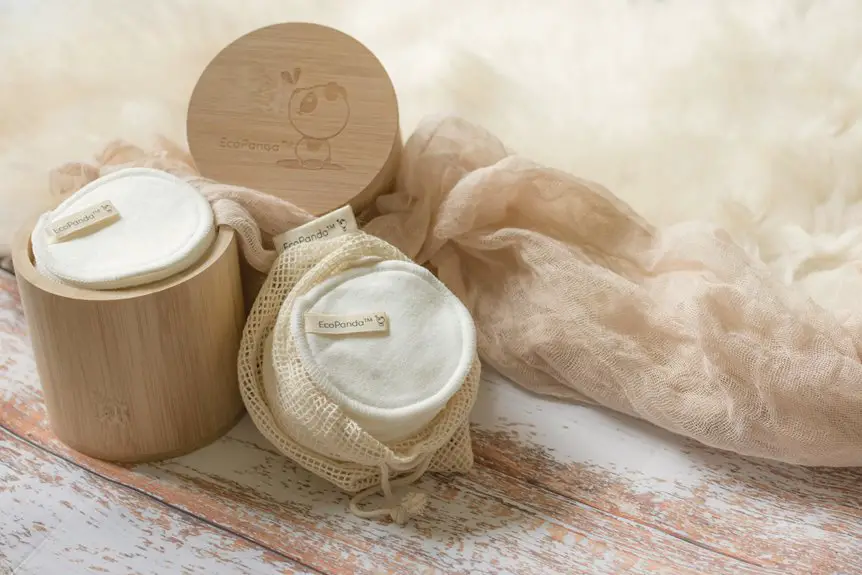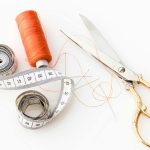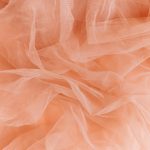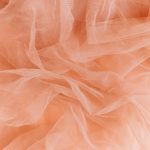You’ll find gauze fabric has a subtle stretch due to its open, lightweight weave. Cotton gauze offers gentle give mainly on the bias but won’t snap back like knits. Double gauze layers limit stretch, providing more stability while staying soft. Crinkle gauze stretches moderately as its puckered texture relaxes before fibers stretch, returning slowly to shape. If you want to handle and sew gauze without distortion, there’s more to learn about each type’s unique behavior and care.
Table of Contents
Key Takeaways
- Cotton gauze has a subtle stretch mainly on the bias due to its loose, open weave but lacks elastic rebound.
- Double gauze offers more stability with less stretch since its two layers support each other and maintain shape.
- Crinkle gauze stretches moderately as its puckered texture relaxes before fibers stretch, providing gentle give without snap-back.
- All gauze types require careful handling during cutting and sewing to avoid distortion and maintain fabric integrity.
- Use stretch-compatible needles and stitches when sewing stretchy gauze to preserve fabric elasticity and prevent damage.
Understanding the Structure of Gauze Fabric
Although gauze fabric looks delicate, its open weave structure gives it unique properties you should understand before working with it.
This loose, airy weave creates a lightweight fabric with visible gaps between threads, making it breathable and soft. When you handle gauze, you’ll notice it’s less dense than typical cotton fabrics, which allows for excellent airflow but also requires gentle care to avoid snagging or tearing.
The weave’s structure means the fabric drapes well without being stiff, offering a comfortable feel against your skin. Knowing this helps you anticipate how gauze behaves during cutting, sewing, or layering.
Stretch Properties of Cotton Gauze
Cotton gauze offers a subtle amount of stretch that can influence how you cut and sew it. This light stretch comes from its loose, open weave rather than elastic fibers, giving the fabric a gentle give primarily on the bias.
When working with cotton gauze, you’ll notice it moves easily but doesn’t rebound like knit fabrics. Because of this, you should handle it carefully to avoid distortion during cutting. If you stretch it too much while sewing, seams can pucker or become misshapen.
To maintain its shape, pin your pattern pieces well and consider using a stabilizer if needed. Understanding this slight stretch helps you anticipate how the fabric behaves, ensuring your finished project fits and drapes beautifully without unexpected stretching.
How Double Gauze Responds to Stretching
When you stretch double gauze, you’ll notice it behaves differently than single-layer cotton gauze due to its two-layer construction.
The two thin layers are loosely woven and stitched together, giving the fabric more stability and less overall stretch. While single cotton gauze might expand noticeably, double gauze tends to resist stretching because the layers support each other.
You’ll find it offers a gentle give but won’t stretch out as much, which helps maintain its shape over time. This makes double gauze ideal for garments or projects where dimensional stability matters but some softness and flexibility are still desired.
Stretch Characteristics of Crinkle Gauze
Since crinkle gauze features a textured, puckered surface, it stretches quite differently compared to flat-woven fabrics.
When you pull on crinkle gauze, the puckers relax first before the actual fibers begin to stretch, giving it a softer, more forgiving elasticity. This means you get gentle give without the snap-back typical of other stretchy fabrics.
Keep these points in mind about crinkle gauze stretch:
- The texture creates natural stretch zones
- Stretch is more about puckers unfolding than fiber elongation
- It offers moderate stretch, not as much as knit fabrics
- Returns slowly to its puckered shape after stretching
- Its stretch is ideal for relaxed, comfortable garments
Understanding this helps you anticipate how crinkle gauze behaves under tension.
Tips for Sewing With Stretchy Gauze Fabrics
Although stretchy gauze fabrics can be tricky to handle, you’ll find that using the right techniques makes sewing them much easier and yields better results.
First, always use a ballpoint or stretch needle to prevent snags and skipped stitches. Opt for a narrow zigzag stitch or a stretch stitch to maintain fabric elasticity.
Pin carefully or use fabric clips to avoid shifting, and consider stabilizing seams with lightweight interfacing or stay tape.
When cutting, lay the fabric flat without stretching it to keep accurate shapes. Sew slowly and gently guide the fabric to prevent puckering.
Finally, test your stitches on a scrap piece before starting your project to verify the tension is just right.
These tips will help you handle stretchy gauze with confidence and precision.
Frequently Asked Questions
What Are the Best Uses for Gauze Fabric in Clothing?
Like a gentle hug on a summer day, gauze fabric works best for airy dresses, baby clothes, and scarves. You’ll love its softness and breathability, perfect for keeping cool and comfy in warm weather.
How Do You Care for and Wash Gauze Fabric?
You should wash gauze fabric gently in cold water, preferably by hand or on a delicate machine cycle. Avoid bleach, and air dry it flat or hang it to keep its softness and shape intact.
Can Gauze Fabric Be Dyed at Home?
You can dye gauze fabric at home using fiber-reactive or all-purpose dyes. Just pre-wash the fabric, follow dye instructions carefully, and handle it gently to avoid stretching or damaging the delicate fibers during the process.
Is Gauze Fabric Suitable for Baby Products?
Think of gauze fabric as a gentle cloud cradling your baby’s skin. You’ll find it perfect—soft, breathable, and lightweight—making it ideal for swaddles, blankets, and clothes that keep your little one cozy and comfy.
Where Can You Buy High-Quality Gauze Fabric?
You can buy high-quality gauze fabric at specialty fabric stores, online retailers like Etsy or Fabric.com, and craft markets. Always check reviews and fabric details to guarantee you get the softness and durability you need.
- What Is Pochampally Ikat? a Journey to India’s Silk City - June 27, 2025
- What Is Pochampally Ikat? a Journey to India’s Silk City - June 27, 2025
- What Is Pochampally Ikat? a Journey to India’s Silk City - June 27, 2025







